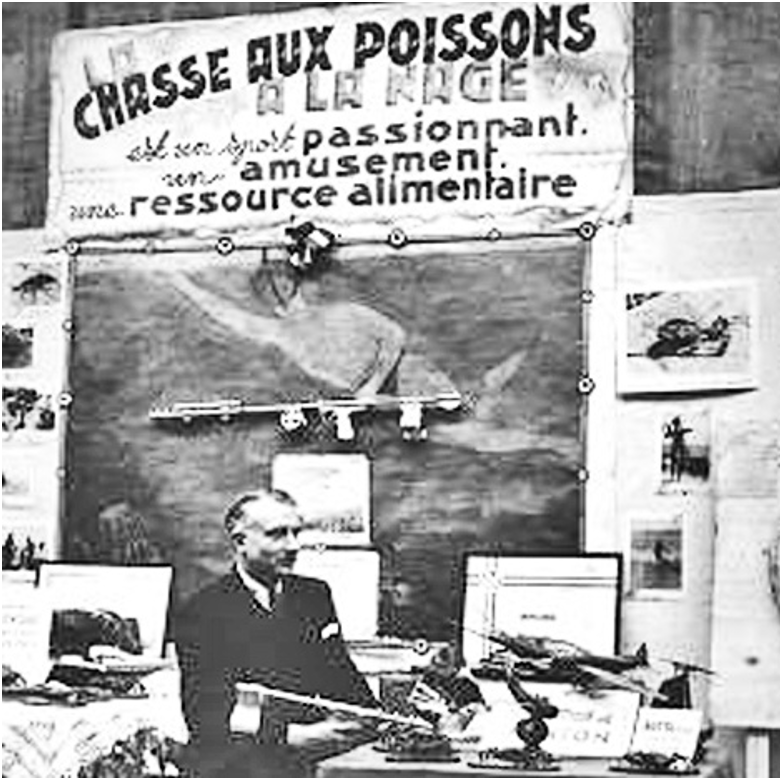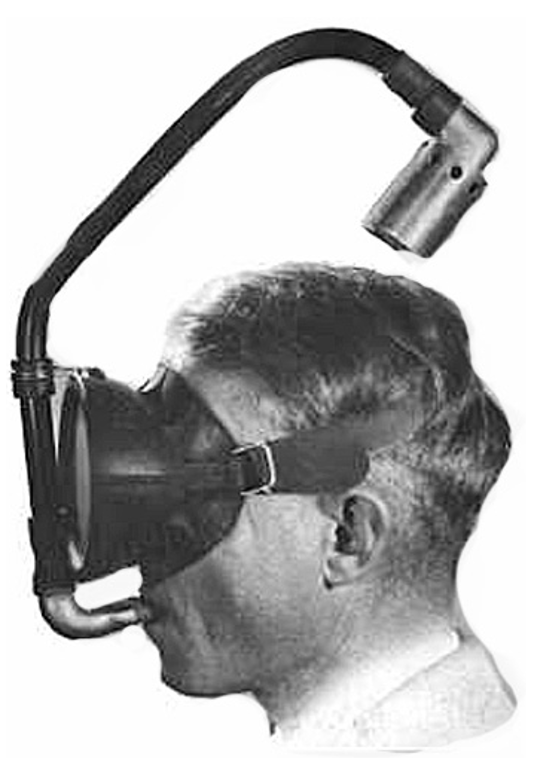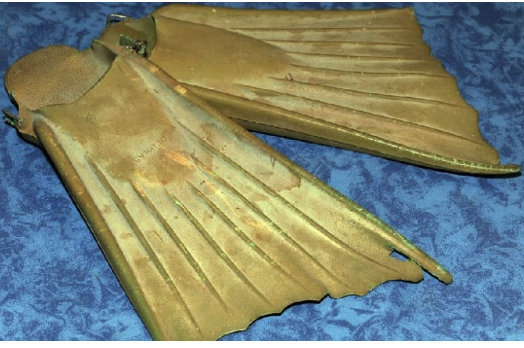The southwestern French city of Nice was home in 1941 to four underwater hunting equipment manufacturers: Douglas, Fusido, United Service Agency and Watersports. The mainly English sounding names were likely a ploy to attract the many wealthy British tourists who over the decades had strolled along Nice’s Promenade des Anglais seafront walkway. The men heading these firms were all seasoned spearfishermen, inventors and aquatic enthusiasts.
Douglas was founded by Maxime Forjot. With the aid of his business partner Albert Mejean, Maxime filed a patent in 1938 for a breathing tube worn on the front of the head over a single-lens rubber mask enclosing the nose and eyes behind a single lens. In 1939, he followed up with a patent application for a spring-action speargun. He is seen right standing in front of a display of his spearfishing inventions and photographs at the “Exposition artisanale de Nice” exhibition in his home town in 1946. The text on the panel or banner at the top of the photograph sings the praises in peacetime of the popular wartime swimming activity of fish hunting, which he describes as an exciting sport, a source of enjoyment and a valuable food resource. In his hands, Maxime holds what is perhaps his best-known invention: a Douglas speargun.

Take a closer look at the large image in Maxime’s display at the 1946 Nice exhibition and you can just make out a swimmer, speargun in hand and presumably immersed in the Mediterranean. On his face, the swimmer wears a diving mask with a frontal snorkel, nowadays the breathing tube of choice for competitive finswimmers, and a pair of fins on his feet. Not particularly remarkable for us in the twenty-first century, but quite revolutionary in the immediate aftermath of World War II and a truly historical moment when we consider the rôle Maxime played in the development of the basic diving equipment we now take so much for granted.
The prototype mask and snorkel were extensively trialled, then marketed as “L’Œil Marin”, [The Sea Eye], whose design was endlessly imitated by Maxime’s rivals despite his 1938 patent. On the left a contemporary book illustration of Maxime’s “Œil Marin” combined with a later version of his breathing tube, now complete with a swan’s-neck curve and a shut-off valve at the supply end.

|
 |
Maxime designed open-heel fins with extended footplates and ribbed blades (right) to complement his facial accessories. In 1951, he was searching a US distributor for his products. Later in the decade, he made further improvements to the strapping and facial seal of his “Œil Marin”. He is credited with inventing the first diving mask with eye and nose coverage only, at a time when goggles or full-face eyewear were the sole underwater vision options available.
___________________